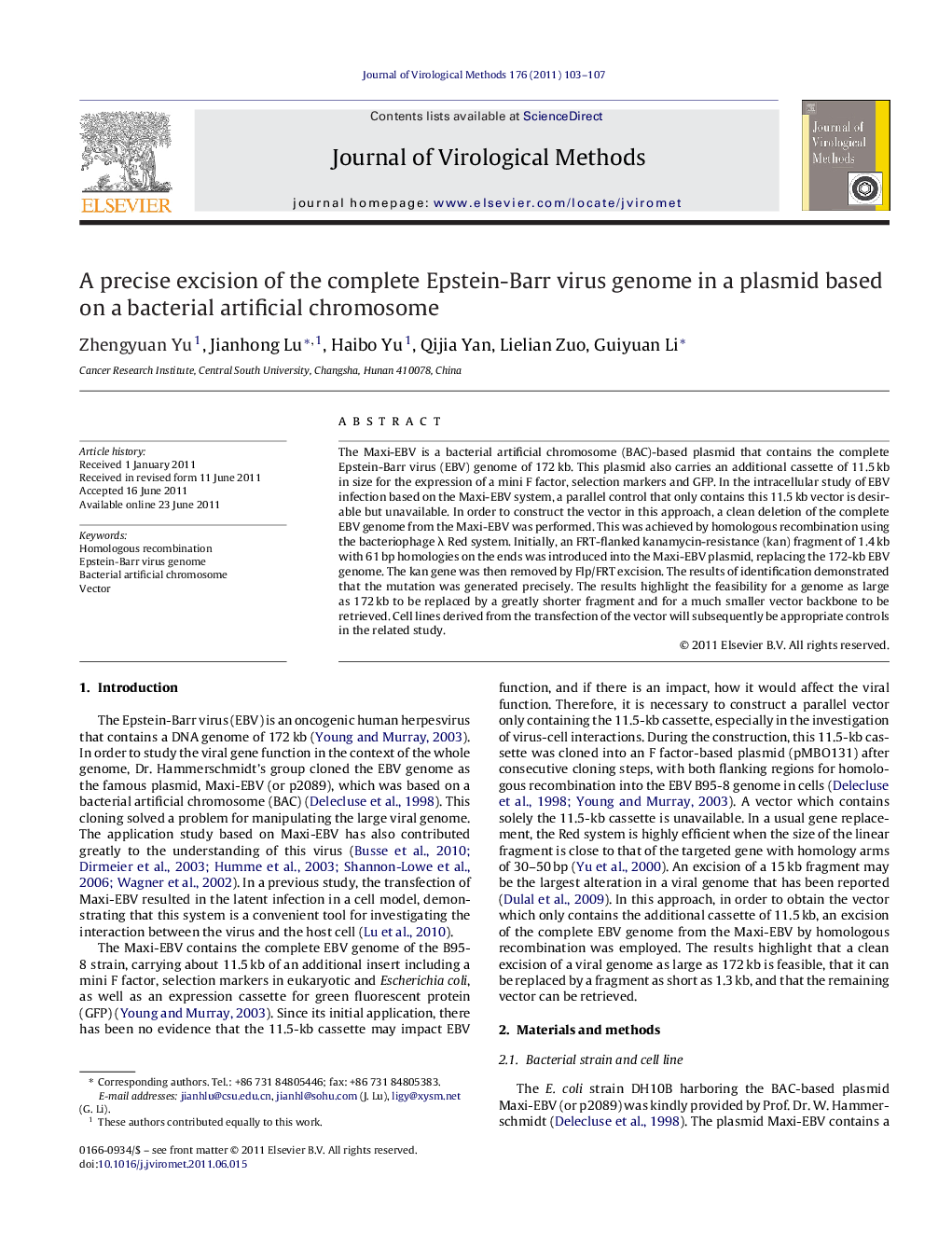| Article ID | Journal | Published Year | Pages | File Type |
|---|---|---|---|---|
| 3406877 | Journal of Virological Methods | 2011 | 5 Pages |
The Maxi-EBV is a bacterial artificial chromosome (BAC)-based plasmid that contains the complete Epstein-Barr virus (EBV) genome of 172 kb. This plasmid also carries an additional cassette of 11.5 kb in size for the expression of a mini F factor, selection markers and GFP. In the intracellular study of EBV infection based on the Maxi-EBV system, a parallel control that only contains this 11.5 kb vector is desirable but unavailable. In order to construct the vector in this approach, a clean deletion of the complete EBV genome from the Maxi-EBV was performed. This was achieved by homologous recombination using the bacteriophage λ Red system. Initially, an FRT-flanked kanamycin-resistance (kan) fragment of 1.4 kb with 61 bp homologies on the ends was introduced into the Maxi-EBV plasmid, replacing the 172-kb EBV genome. The kan gene was then removed by Flp/FRT excision. The results of identification demonstrated that the mutation was generated precisely. The results highlight the feasibility for a genome as large as 172 kb to be replaced by a greatly shorter fragment and for a much smaller vector backbone to be retrieved. Cell lines derived from the transfection of the vector will subsequently be appropriate controls in the related study.
► We performed an excision of the complete EBV genome by homologous recombination. ► A much smaller vector of 11.5 kb was retrieved. ► It is feasible for a 172-kb genome to be replaced by a fragment of only 1.3 kb. ► This represents the largest deletion mutation for a viral genome. ► Cell lines derived from the vector will be appropriate controls.
